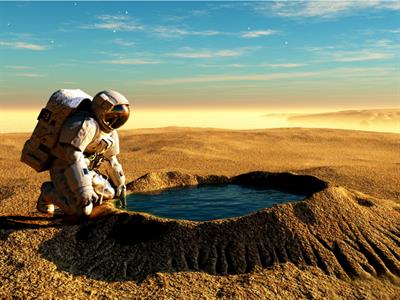
PUMPA - SMART LEARNING
எங்கள் ஆசிரியர்களுடன் 1-ஆன்-1 ஆலோசனை நேரத்தைப் பெறுங்கள். டாப்பர் ஆவதற்கு நாங்கள் பயிற்சி அளிப்போம்
Book Free DemoHi students, do you remember the four spheres of Earth?
Yes, they are Lithosphere, Atmosphere, Hydrosphere and Biosphere. In the previous chapters, we studied the lithosphere and atmosphere, and now it's time for the hydrosphere, i.e. water component of the Earth.
Yes, they are Lithosphere, Atmosphere, Hydrosphere and Biosphere. In the previous chapters, we studied the lithosphere and atmosphere, and now it's time for the hydrosphere, i.e. water component of the Earth.
Unlike other planets in our solar system, the surface of the Earth is uniquely made of 70% liquid water. Though it is useful for life, we may get questions like does it formed on earth or came somewhere from the universe? Because when our planet formed, Earth's surface should be bone dry.

The story of Earth's formation goes like this: our solar system formed from the collapse of a large cloud of dust and gas. The dense gas at the centre ignited to form the Sun. Sun, being unstable, young, unleashed a fierce solar wind. Over time this wind (stream of charged particles) pushed the remaining gas cloud farther out, leaving only solid particles behind. These solid particles clumped together into components of the solar system such as rocks (asteroids and meteors), planetesimals, and finally, the inner rocky planets of the solar system. And the problem here is water, in the form of ice, couldn't have been one of the solid particles that stuck around because the early inner solar system was far too hot for ice (frozen water), and the solar wind would have blasted away any water vapour. So if Earth didn't start off with water, then how did we end up with such splendid water.
We know water (H2O) wasn't manufactured here because of natural processes like breathing, combustion, and photosynthesis. As these processes create and destroy roughly equal amounts of water - and either way, the amounts in question are so minuscule that they can't account for the abundance of water on the planet. As Earth's water was neither part of the original package nor manufactured here, we may conclude that it must have flown in from far away, on meteoroids or comets or other bodies originating in the outer solar system.
Here, the meteors or comets were far enough from the Sun's heat for frozen water to survive. Comets (having frozen water) are a logical candidate for the source of water, but discovering the mismatch in the proportion of heavy water to normal water, they were ruled out. These mismatched chemical compositions suggest that Earth's water is not from comets. So the next most likely source for Earth's water is a type of meteor called carbonaceous chondrite. "Chondrite" is a name given to the class of stony meteoroids that strikes the Earth most commonly. But only these (carbonaceous chondrites) meteoroids contain water as well as lots of carbon in it. They have water in them as they formed out beyond the Sun's "frost line", and moreover, their water has heavy hydrogen proportion similar to that of earth water. This strongly suggested that these earth-crashers are the source of the water on our planet. And thus, the water that turned our planet into a blue marble came, quite literally out of meteoroids.
We know water (H2O) wasn't manufactured here because of natural processes like breathing, combustion, and photosynthesis. As these processes create and destroy roughly equal amounts of water - and either way, the amounts in question are so minuscule that they can't account for the abundance of water on the planet. As Earth's water was neither part of the original package nor manufactured here, we may conclude that it must have flown in from far away, on meteoroids or comets or other bodies originating in the outer solar system.
Here, the meteors or comets were far enough from the Sun's heat for frozen water to survive. Comets (having frozen water) are a logical candidate for the source of water, but discovering the mismatch in the proportion of heavy water to normal water, they were ruled out. These mismatched chemical compositions suggest that Earth's water is not from comets. So the next most likely source for Earth's water is a type of meteor called carbonaceous chondrite. "Chondrite" is a name given to the class of stony meteoroids that strikes the Earth most commonly. But only these (carbonaceous chondrites) meteoroids contain water as well as lots of carbon in it. They have water in them as they formed out beyond the Sun's "frost line", and moreover, their water has heavy hydrogen proportion similar to that of earth water. This strongly suggested that these earth-crashers are the source of the water on our planet. And thus, the water that turned our planet into a blue marble came, quite literally out of meteoroids.